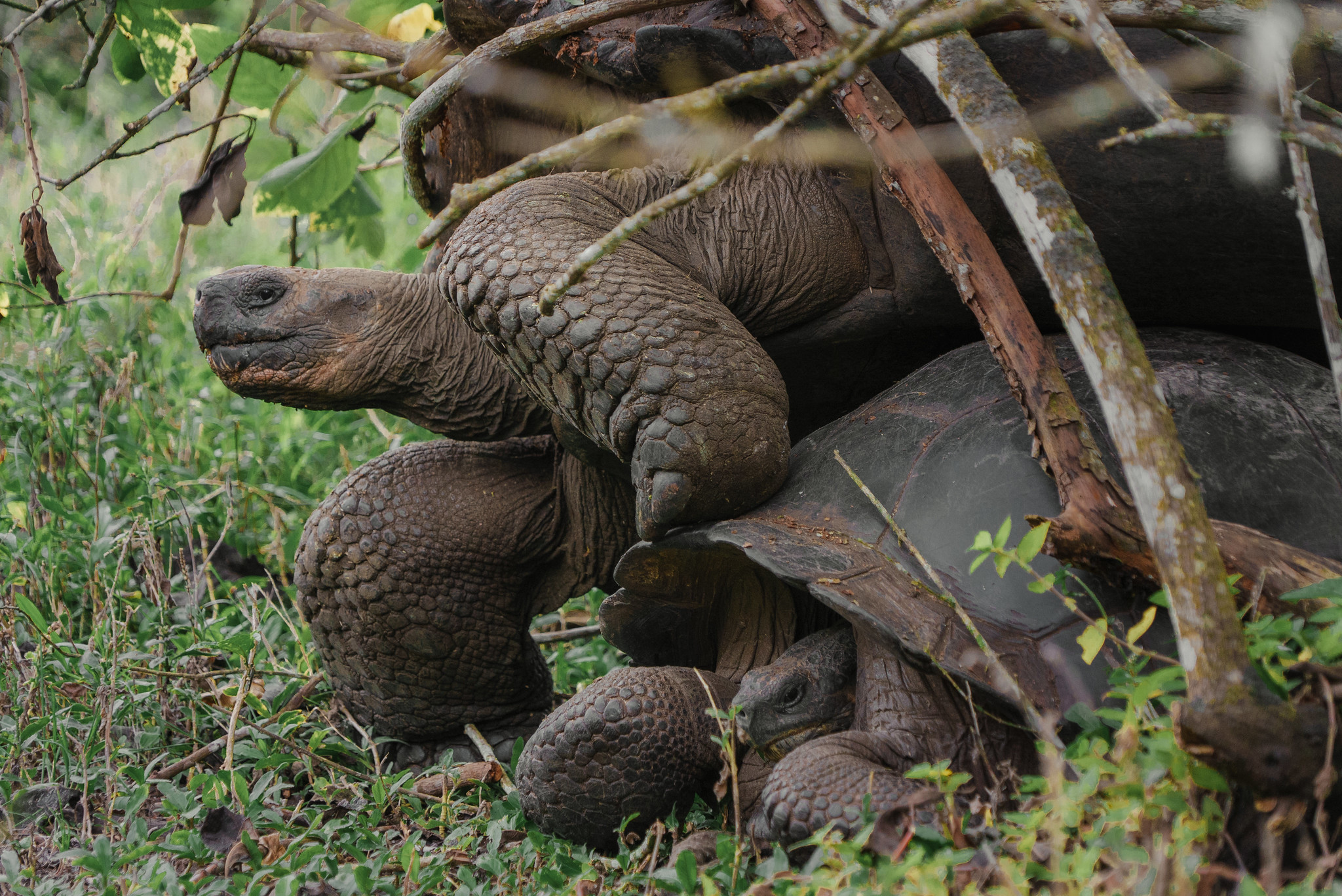Sante Fe Island
History
Santa Fe Island, also called Barrington Island after British Admiral Samuel Barrington, is a small, relatively flat island at the center of the archipelago, to the southeast of Santa Cruz Island. Geologically, it is one of the oldest volcanoes, with rock formations below the surface of the water that date back 3.9 million years. There is strong evidence that giant tortoises were once native to Santa Fe. At least two accounts of whaling vessels removing tortoises from Santa Fe exist and two informants to the California Academy of Sciences expedition in 1905-06 told of tortoises having been on Santa Fe. Current genetic analyses of the bone fragments collected by the California Academy suggest that the Santa Fe tortoise was a unique tortoise taxon, most closely related to the Española giant tortoise (Chelonoidis hoodensis). The vegetation of the island is characterized by the presence of a dense forest of the largest species of giant Opuntia cactus.
Today
Santa Fe is home to two species endemic to the island: the Santa Fe Land Iguana (Conolophus pallidus) and the Santa Fe Rice Rat (Oryzomys bauri). The land iguana population was recently estimated to have 6,500-7,000 individuals. It is also the site of the longest running research project on marine iguanas, begun in the late 1970s. There is a single visitor site on land and three marine sites around the island.
CONSERVATION HISTORY AND CHALLENGES
The greatest challenge on Santa Fe is to ensure that no invasive species become established. Of particular concern is the potential arrival of introduced rats. On all islands except for Santiago, the endemic rice rat became extinct following the arrival and establishment of the invasive Black Rat. Regular monitoring of the endemic rat population is critical, along with regular checks for the arrival of introduced rats. Goats were introduced to Santa Fe sometime prior to 1905. These were finally eliminated (over 3,000 animals) between 1964 and 1972, with the last three goats removed in 1974. The vegetation of Santa Fe recovered slowly until the El Niño of 1982-83, when excessive rainfall resulted in near complete recovery. The Little Fire Ant was discovered and eradicated in 1975 and again in 1988. Periodic checks are critical to ensure that this aggressive species never gets reestablished on this small island.
At the international workshop on giant tortoises in 2012, the decision was made to pursue the return of giant tortoises to Santa Fe. A thorough review of the literature and the genetics of the few museum fragments from Santa Fe tortoises, as well as an evaluation of the status of the tortoise population on Española Island, resulted in a decision by the Galápagos National Park Directorate to restore giant tortoises on Santa Fe using an analog or substitute species – the Española giant tortoise. After building exclosures in the tortoise release area to later evaluate the impact of tortoises on the vegetation, the first release of 201 young Española tortoises (ranging in age from 4-10 years) was completed in June 2015. Annual releases of juvenile tortoises are planned for the next ten years.
Santa Fe
Visitor Site
Santa Fe
The visit begins with a wet landing on the small beach in Barrington Bay on the northeast side of the island.
Large numbers of sea lions are found on the beaches in the bay and can often be seen surfing in the waves. There are two trails, one short loop that is fairly close to the beach and provides a close-up look at the massive Santa Fe Opuntia cactus. Santa Fe land iguanas as well as Galapagos hawks are often seen along the visitor trail.
The second trail climbs a steep cliff, providing a view of the inland section of the island.
Santa Fe
Marine Site
El Fondeador, La Encañada, and Costa Este
There are three dive sites on the north and east sides of Santa Fe. Sea lions are the principal attraction at all three sites. Fish densities are fairly low but there are occasional sightings of sea turtles and various species of rays. Galápagos sharks are also often seen at the East Coast (Costa Este).
More from Galapagos Convervancy
Keep Exploring
Our Efficiency
75%
Direct conservation and grants investments
15%
Fundraising
10%
Management
